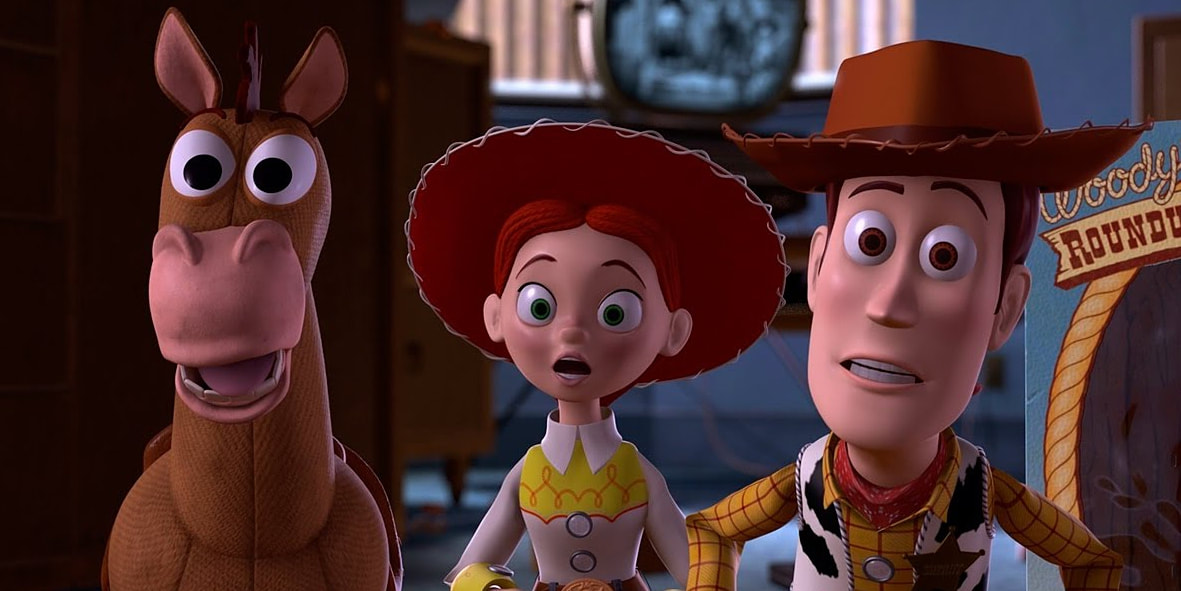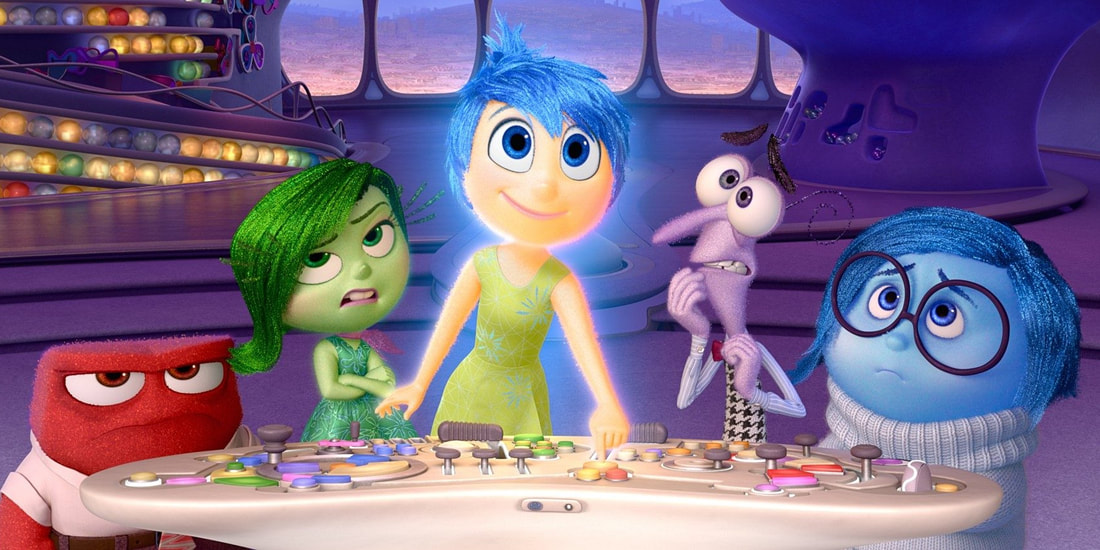Pixar Animation Studios and the Oscars are a tight-knit bunch. Just in the Academy’s Best Animated Feature category alone, Pixar has produced the award-winning movie in the category 11 times across its 24 years of existence (45% success rate). With “Inside Out 2” about to hit theaters, now would be a good time to check out the expansive history of Pixar movies at the Academy Awards and how this studio was especially unstoppable in the 2000s.
When “Toy Story” debuted in 1995, animated films did not regularly appear at the Oscars. “Beauty and the Beast” made history with a Best Picture nomination four years earlier, but that was the exception, not the rule. Typically, animated movies were seen as “strictly for kids” since they didn’t star flesh and blood individuals, which meant they couldn’t compete in the acting categories. These and other factors limited their presence at the Oscars beyond the Best Original Song category, despite the medium producing masterpieces like “Akira” and “Nausicaä of the Valley of the Wind” by the mid-1990s.
“Toy Story” changed the game regarding what animated movies could accomplish at the Oscars. A Best Picture nomination eluded this feature, as did a Best Original Screenplay nod. This was a tremendously impactful nomination since this was the first time in history an animated movie had ever scored a nod in one of the Screenplay categories. Additionally, “Toy Story” scored Best Original Song and Score nominations as well as a Special Achievement Oscar. The latter award was in recognition of “Toy Story” being the first fully computer-animated movie in history. Cinema would never be the same, and neither would the Oscars.
Pixar Animation Studios unleashed “A Bug’s Life” as its second feature film three years later. This particular title only picked up one Oscar nomination for Best Original Score, a category animated films that had a recurring presence dating back to the days of “Pinocchio” winning the category in 1941. Arguably, the most surprising among Pixar’s early Oscar nominations came with “Toy Story 2.” The surprise here centered on the film only scoring a single Oscar nomination for Best Original Song for “When She Loved Me.” Given that “Toy Story 2” was a highly acclaimed motion picture and even considered superior to its predecessor in some cases, one might’ve expected it to get a Best Adapted Screenplay Oscar nod, much like the original “Toy Story” secured a Best Original Screenplay Oscar nomination.
 However, “Toy Story 2” only got one Oscar nomination, solidifying it as the only original “Toy Story” trilogy film not to get a screenplay Oscar nod. Interestingly, “Toy Story 2” was heavily outpaced in Oscar nominations by “Monsters, Inc.” Pete Docter’s feature-length directorial debut secured four Oscar nominations, including one for Best Original Song that it went on to win. Scoring a victory for the Randy Newman ditty “If I Didn’t Have You,” “Monsters, Inc.” was the first Pixar movie in history to win a non-Special Achievement Oscar. This came even as the title lost to “Shrek” in the first-ever Best Animated Feature Oscar race.
However, “Toy Story 2” only got one Oscar nomination, solidifying it as the only original “Toy Story” trilogy film not to get a screenplay Oscar nod. Interestingly, “Toy Story 2” was heavily outpaced in Oscar nominations by “Monsters, Inc.” Pete Docter’s feature-length directorial debut secured four Oscar nominations, including one for Best Original Song that it went on to win. Scoring a victory for the Randy Newman ditty “If I Didn’t Have You,” “Monsters, Inc.” was the first Pixar movie in history to win a non-Special Achievement Oscar. This came even as the title lost to “Shrek” in the first-ever Best Animated Feature Oscar race.
But Pixar wouldn’t have to wait long to win the category. Its next feature, Andrew Stanton’s “Finding Nemo,” easily secured a Best Animated Feature Oscar win. It scored three additional nominations at that year’s Oscars, including a nod for Best Original Screenplay. Pixar had once again broken into the screenwriting categories that eluded many other animated family movies. The following year, Pixar once again won the Best Animated Feature category with “The Incredibles.” The feature also scored a Best Sound Editing Oscar win, making it the first Pixar motion picture to win multiple Oscars. Oh, and Brad Bird’s inaugural foray into computer-animated storytelling also garnered a Best Original Screenplay nomination.
Unsurprisingly, the more critically divisive “Cars” did not rev up the engines of Oscar voters. It failed to secure any sound or screenwriting Oscar nominations and lost out on winning Best Animated Feature to “Happy Feet.” After “Cars” scored only two Oscar nominations, the following year’s “Ratatouille” scored the most nominations for a Pixar movie up to that point, with five nominations, including ones in Best Original Screenplay and Best Original Score. However, it could’ve gone further that year if Disney and Pixar had campaigned “Ratatouille” properly. In late November 2007, The New York Times reported that the two studios were focusing “Ratatouille’s” Oscar campaign on just winning Best Animated Feature. The perception was that it was a fool’s errand to try and break into the Best Picture field that could only consist of five movies, given that only one animated feature had ever been nominated in the category.
By the following fall, though, Disney and Pixar’s award season campaigns had learned their lesson. The 2008 masterpiece “WALL-E” received a full-court Best Picture campaign, with the feature being taken seriously by awards pundits as a potential nominee that year. Although “WALL-E” would get overlooked that year in Best Picture, the film did score six Oscar nominations that year, including one for Best Original Screenplay.
In 2009, in response to titles like “WALL-E” and “The Dark Knight” missing out in the Best Picture field, the Academy expanded the number of Best Picture nominees for the 82nd Academy Awards to ten. This allowed the 2009 Pixar title “Up” to secure a Best Picture nod (along with four other Oscar nominations), making it only the second animated feature in history to score a nomination in that Oscar field. The following year’s “Toy Story 3” (which secured five Oscar nominations, including one for Best Picture) concluded a remarkable Oscar nomination streak for Pixar Animation Studios. In addition to dominating the new Best Animated Feature category, the studio had scored two Best Picture nominations and six screenplay nominations over eight years.
In the wake of “Toy Story 3,” Pixar’s Oscar nominations were primarily limited to Best Animated Feature. That was the only category in which subsequent Best Animated Feature Pixar contenders like “Brave,” “Incredibles 2,” “Luca,” and “Turning Red” were nominated. Several Pixar features like the two “Cars” sequels, “Finding Dory,” “Monsters University,” “The Good Dinosaur,” and “Lightyear” didn’t even make it into that category. No post-2010 Pixar movies have made it to Best Picture, not even “Soul,” which was released during a pandemic-affected year. The only post-2010 Pixar title to get an Oscar nomination in one of the screenplay categories is the 2015 motion picture “Inside Out.”
 But, the Academy Awards were not suddenly snubbing Pixar. Best Animated Feature is still heavily dominated by the studio, while both “Coco” and “Soul” won two Oscars each (joining “The Incredibles,” “Up,” and “Toy Story 3” as the only Pixar movies with multiple Oscar wins). This dearth of ubiquitous Pixar Oscar nominations can be chalked up to a decrease in the critical acclaim garnered by the studio’s works. “Coco,” “Soul,” and “Turning Red” got the sort of universal praise “Ratatouille” and “Up” garnered in the 2000s. Nevertheless, Pixar’s 2010s were dominated by sequels that scored reactions ranging from negative to pleased but not blown away.
But, the Academy Awards were not suddenly snubbing Pixar. Best Animated Feature is still heavily dominated by the studio, while both “Coco” and “Soul” won two Oscars each (joining “The Incredibles,” “Up,” and “Toy Story 3” as the only Pixar movies with multiple Oscar wins). This dearth of ubiquitous Pixar Oscar nominations can be chalked up to a decrease in the critical acclaim garnered by the studio’s works. “Coco,” “Soul,” and “Turning Red” got the sort of universal praise “Ratatouille” and “Up” garnered in the 2000s. Nevertheless, Pixar’s 2010s were dominated by sequels that scored reactions ranging from negative to pleased but not blown away.
With an emphasis on franchise fare and less consistent critical marks, it is no wonder that Pixar Animation Studios has never come close to recapturing its glorious Oscar nomination days of 2003-2010. However, the studio’s legacy from this era can be felt in subsequent animated movies engaging in major award season pushes for categories beyond Best Animated Feature. As late as 2007, even Disney and Pixar award season coordinators saw the perceived stigma against animated cinema as too great to warrant even attempting a “Ratatouille” Best Picture campaign. However, “Up,” “Toy Story 3,” and other Pixar titles proved voters will respond to animated features if the quality is there.
Modern award season campaigns pushing titles like “Flee,” “Guillermo del Toro’s Pinocchio,” and “Spider-Man: Across the Spider-Verse” in all Oscar categories are chasing hopes of being the next “Up” or “Toy Story 3.” That legacy will undoubtedly inform Disney’s inevitable major Oscars push for Pixar’s summer 2024 release “Inside Out 2.” Only time will tell if that motion picture can mimic its predecessor’s multiple Oscar nominations (though the track record of non-“Toy Story” Pixar sequels getting ignored by the Academy doesn’t bode well). If “Inside Out 2” gets any Oscar nominations, it’ll follow a rich legacy of Pixar Animation Studios upending the rules for where animated movies can thrive at this ceremony.
Are you looking forward to seeing “Inside Out 2” this summer? Do you think it has the potential to score multiple Academy Award nominations? What other animated features could land big at the 2025 Oscars? Please let us know in the comments section below or on our Twitter account.
You can follow Lisa and hear more of her thoughts on the Oscars & Film on her portfolio here


